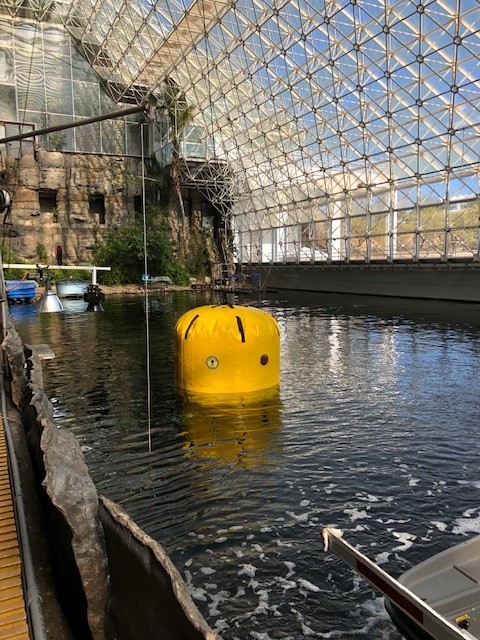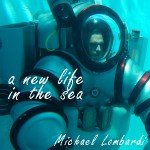I just recently returned from personally visiting the University of Arizona’s Biosphere 2 facility out in the middle of the desert. As a kid, I remember news headlines highlighting the 2 year social experiment that placed a team of ‘Biospherians’ inside the isolated ecosystem – it was really quite interesting to see where the project and facility stood today.
Within the Biosphere (which is a habitat), is an ocean habitat, within which we deployed one of our Ocean Space Habitats – a habitat trifecta so to speak. Part of the ongoing exercise is to push the technology towards increased portability and mobility while operating remotely. In some distant future, should we ever make it to Mars or elsewhere, inflatable habitats will be a necessary part of the equation – they can provide considerable habitable space packed into a small/lightweight payload, at least lighter in weight than a solid state alternative. So, there’s no place better to evaluate portable habitat than within a habitat, inside a habitat.

Biosphere 2 itself was an experiment to consider these same principles – atmospheric management, sustenance of food, and of course managing social challenges. The recent film ‘Spaceship Earth’ covered the project well, speaking to its technological feats, as well as its trials and tribulations.
Following the termination of the Biospherian experiment, the facility was eventually turned over to the University of Arizona, who has since instituted a number of truly fascinating and important research programs. One unique capability is that it’s among the few places on Earth that has the isolation of ecosystem scale habitats which can be monitored, manipulated, and studied over long periods of time. It’s very rare to be able to study something ecosystem level without being in the field. A second unique circumstance is that Biosphere itself has in many ways become its own unique ecosystem. While there’s some, but very little atmospheric exchange with the outside, there are populations of plant and animal critters now several generations old that have evolved solely within the Biosphere space – very important to model from the perspective of understanding how we might sustain life elsewhere in the future.
As odd as it may be perceived – our future, from sea to space and beyond, may still be this isolated habitat in the middle of the Arizona desert – “Spaceship Earth”.

